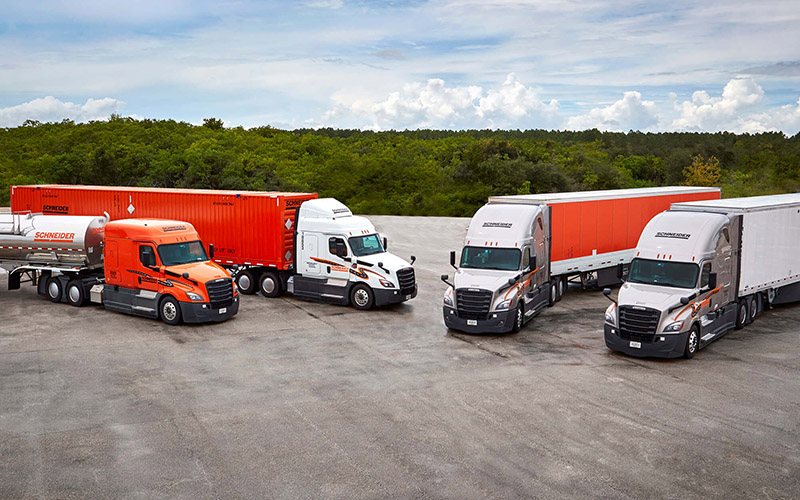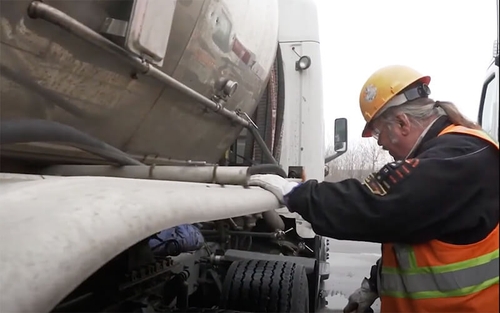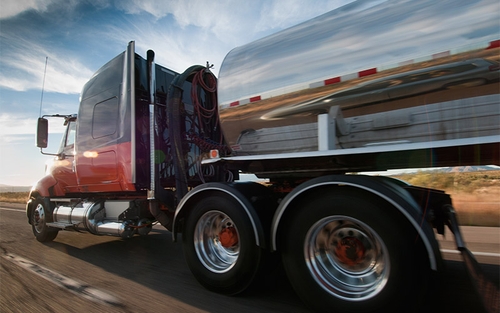Types of trucking jobs — An overview for new drivers


By The Schneider Guy
Estimated reading time: 2 minutes
The trucking industry offers a huge variety of driving jobs, and it can be hard to make sense of all the options if you’re new to the industry. In this blog, we’ll break down some of the many different types of truck drivers.
Keep reading to learn more about the different types of trucking and which ones could be a good fit for you.
What types of truck drivers are there?
3 different configurations for truck drivers
Driving jobs are available in a variety of configurations, even extending to part-time options. The three main types of configuration truck drivers can choose from are as follows:
- Drive within a small geographic area, like a city or a state.
- Get home daily.
- Make multiple stops during the day.
- Load and unload freight.
- Operate day cabs designed for short hauls.
- Deliver within a specific region of the country, such as the West, Midwest or Northeast.
- Get home multiple times a week, or at least once a week.
- Haul long-distance, single stop loads.
- Operate sleeper trucks, which provide drivers a place to sleep.
7 different hauls for truck drivers
Along with having variety of schedule options, truck drivers jobs also have a wide range of freight opportunities to choose from.
1. Dry van (also known as van truckload).
Dry van drivers transport a wide range of goods typically in standard 53-foot trailers. This is the most common style of truck driving due to the ever-present demand for dry goods.
Wondering what it’s like behind the wheel? Watch this video to see what the life of a Schneider dry van driver is like.
2. Dedicated
Dedicated drivers haul freight for only one customer. A dedicated driving job often consists of transporting goods between customer distribution centers and their stores.
Dedicated driving positions encompass a wide range of freight and offer drivers a lot of consistency regarding schedules and routes.
Interested in this type of driving job? Check out this video to learn more about the many perks of hauling dedicated freight.
3. Reefer.
Reefer drivers haul refrigerated trailers that control the temperature of their freight. Reefer drivers are often responsible for transporting goods such as:
- Fruits and vegetables.
- Dairy products.
- Meat and poultry.
- Seafood products.
- Pharmaceuticals.
- Flowers.
4. Flatbed.
Flatbed drivers haul loads or goods that don't fit in a typical trailer. Flatbed trucking generally requires additional training since drivers are usually responsible for properly securing their cargo to prevent shifting during transit.
Flatbed drivers haul freight such as:
- Lumber, metal and steel.
- Building equipment.
- Machinery.
- Other vehicles.
5. Intermodal.
Intermodal drivers are responsible for hauling containers between rail yards and customers.
Intermodal drivers typically work with extra equipment, like chassis that carry the containers. They often drive in a lot of urban locations and deal primarily with drop-and-hook freight.
Want a behind-the-scenes look at intermodal driving? Learn more about the unique equipment and working conditions of these opportunities in this video.
6. Tanker.
Tanker drivers transport liquid and dry bulk loads in steel tank trailers. These drivers are frequently responsible for manually loading and unloading their trailers with pumps and hoses.
Tanker drivers haul either hazardous or non-hazardous loads, the former of which requires additional endorsement and training. Examples of non-hazardous loads include:
- Water.
- Milk.
- Juice.
- Liquid sugar.
- Sand.
- Gravel.
- Plastic and wooden pellets.
See what else makes tanker truck driving such a unique, rewarding experience in this video.
7. HazMat.
HazMat drivers are certified to transport corrosive, explosive, flammable, poisonous or otherwise dangerous materials, such as:
- Gasoline.
- Propane.
- Alcohol.
- Paint and paint thinners.
Theseroles require drivers to undergo extensive safety training and have a HazMat endorsement for their CDL. These positions are often, but not always, also tanker jobs.
Other types of trucking jobs
Beyond the jobs listed above, there are some other unique opportunities to be found in theindustry.
A few of the other options include:
- Less-than-truckload (LTL) driver.
- Owner-operator truck driver.
- Port drayage truck driver.
Drivers can also choose Class B CDL driving jobs, such as:
- Dump truck driver.
- Cement truck driver.
- Garbage truck driver.
- Straight truck driver.
- Final mile driver.
Looking to get your CDL?

Schneider Guy loves the "Big Orange." He's passionate about the trucking industry and connecting people to rewarding careers within it. He's been the eyes and ears of our company since our founding in 1935, and he's excited to interact with prospective and current Schneider associates through "A Slice of Orange."



